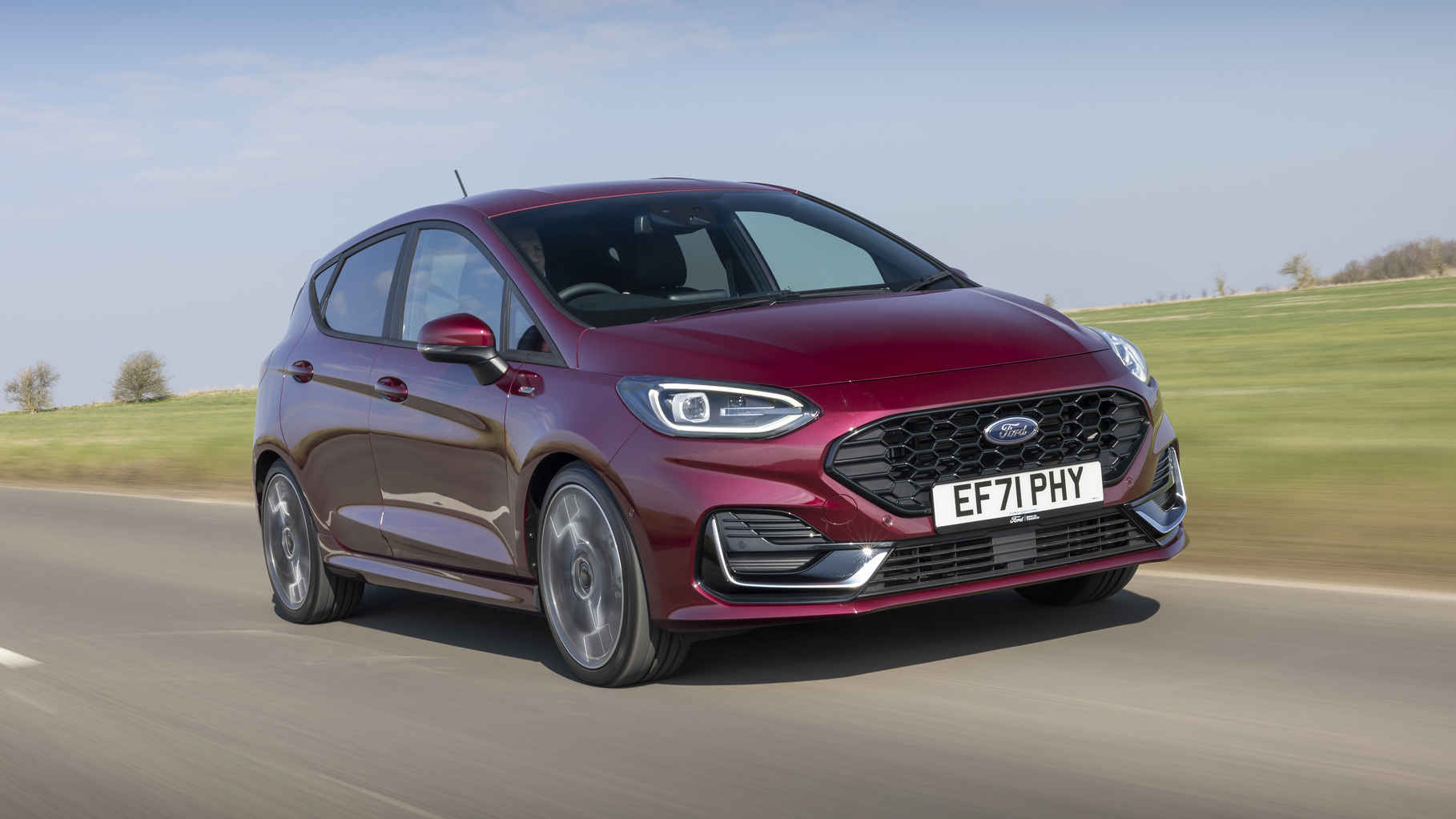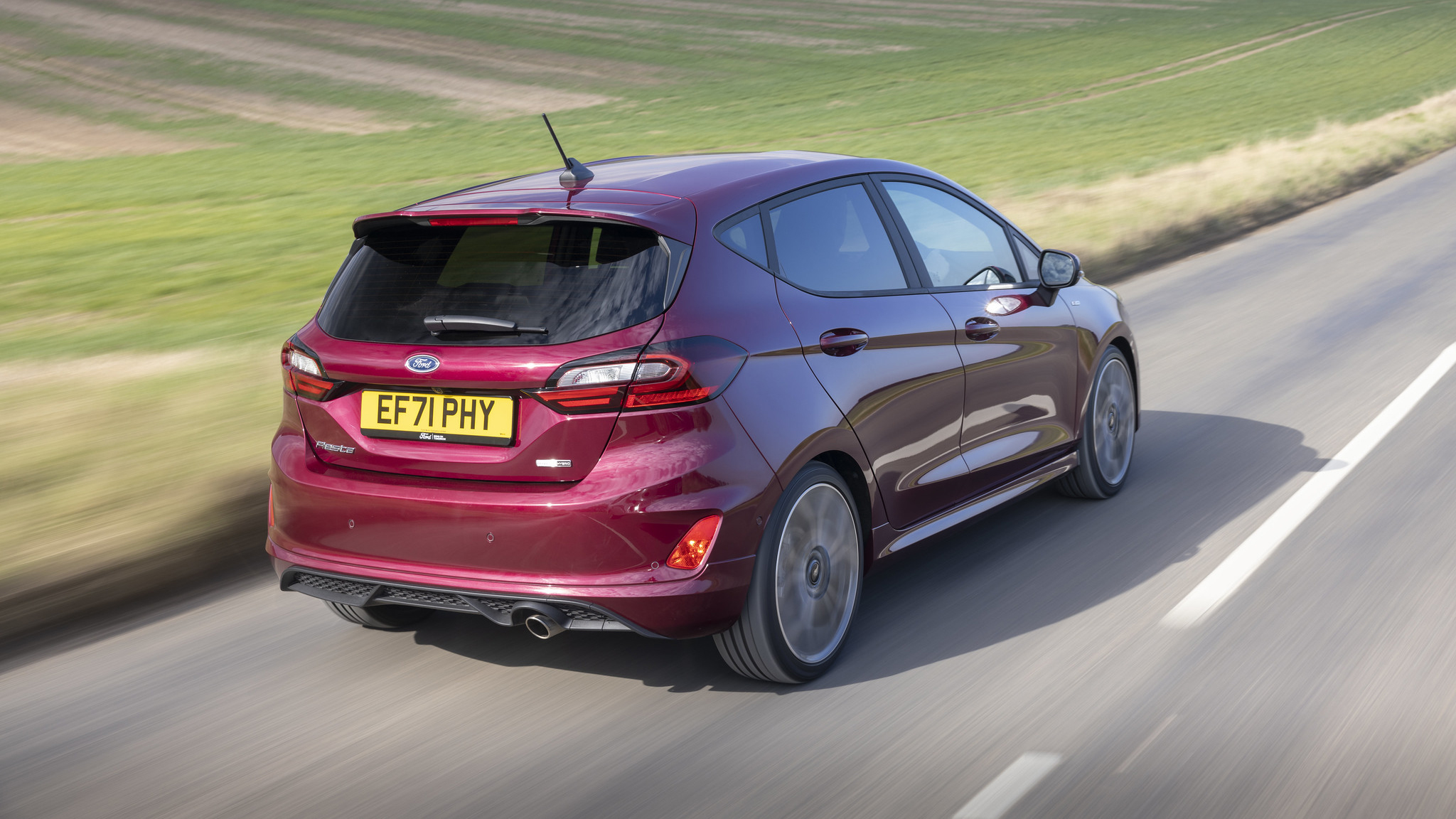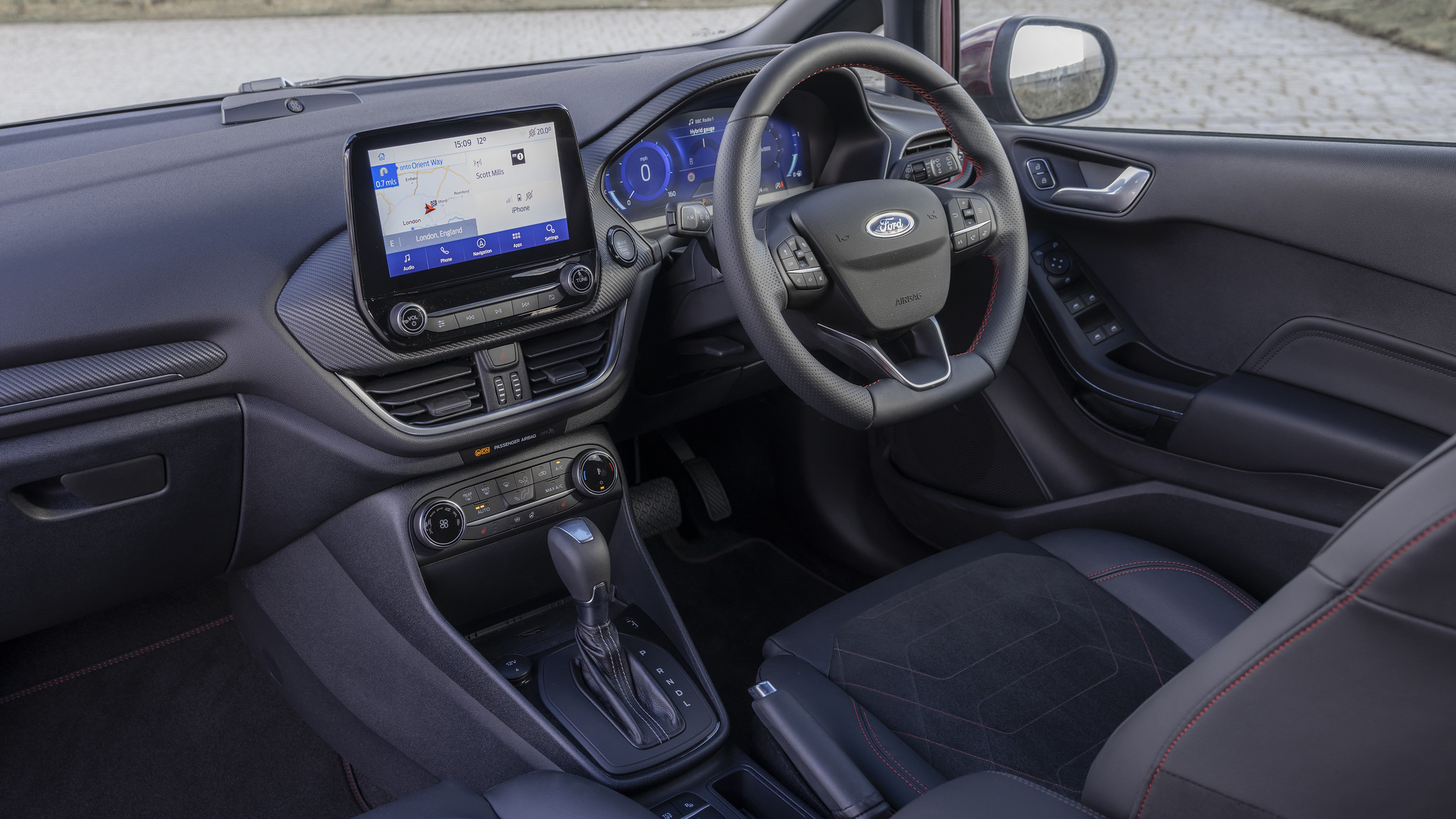
Ford Fiesta review
Driving
What is it like to drive?
There are three distinct suspension set-ups at launch. The Active goes for ‘rough road’ and adds a poor-weather drive mode, but we’ll focus on the other two here as most will avoid the faux-crossover Fiesta. Probably wise - you're better off spending the extra money on some more optional extras. The Trend and Titanium Fiestas get a comfort-oriented setup. This standard chassis retains the characteristic Fiesta sense of agility and feel as you swing it into a bend. It also resists understeer very gamely, subtly using the unseen hand of brake applications on the inside wheel.
When the seventh-gen arrived in 2017 it was given a wider track, bigger and more sophisticated bushings, stiffer arms, higher-spec dampers, grippier tyres and uprated brakes compared to its predecessor, so the Fiesta remains top of the class in the dynamics department.
So what do ST-Line cars get?
As you might be able to tell from the styling, the ST-Line is even more sure of itself. Thank its lower ride, stiffer springs, firmer dampers, stronger rear twist-beam and firmer front anti-roll bar, and even re-calibrated steering assistance and ESP tune.
So body roll is always lower, the steering more precise even when there's strong cornering load. Unlike older superminis, you steer with the wheel – there isn't much chance of trimming the line on the throttle. But then the steering is so precise that's not much of an issue. It's not as brilliantly transparent and tweakable on the limit as a Mini, but if that’s what you’re after then the ST is still available.
Although the ST-Line has a tauter ride than the base chassis, overall comfort isn't really compromised either except over sharp bumps at town speed. The softer base suspension is pretty plush in town, though, so Trend or Titanium trim might be your best bet if that’s where you spend most of your time.
What are the engines like?
We’re yet to drive the 99bhp version of the three-cylinder turbo EcoBoost, but with added mild-hybrid assist and 123bhp it’s a fantastic little engine. It’s a hoot to use, with shedloads of mid-range puff and a boisterous enthusiasm to rev. Plus the 14lb ft electric motor fills in gaps where you’d expect turbo lag. We don’t miss the diesels, that’s for sure.
The little petrol sounds great and it can shut off one of its cylinders at a cruise for better economy. Ford claims 0-62mph in 9.4 seconds for the manual and 9.6 for the auto, as well as fuel consumption of between 53 and 56mpg. A little bit of regenerative braking helps to keep the small lithium-ion battery topped up at all times too.
And the gearboxes?
The six-speed manual gearbox has a well-greased and precise stick action, and well-chosen ratios. You swap around between them for fun not because you always have to. The seven-speed auto is good too, although there are no steering-wheel mounted paddles for manual override and with a chassis this playful you’ll want the joy of a manual, especially if you’re going for ST-Line trim.
How refined is it?
For such a small thing it’s impressively composed. At a cruise, the steering holds its lane well and wind or road noise isn't at all bothersome. The standard 18-inch wheels on Vignale-spec cars are probably overkill though, even when combined with the raised Active trim – go for the 17-inchers for a more composed ride.
Featured

Trending this week
- Car Review
BMW 1 Series
- Top Gear's Top 9
Nine dreadful bits of 'homeware' made by carmakers






